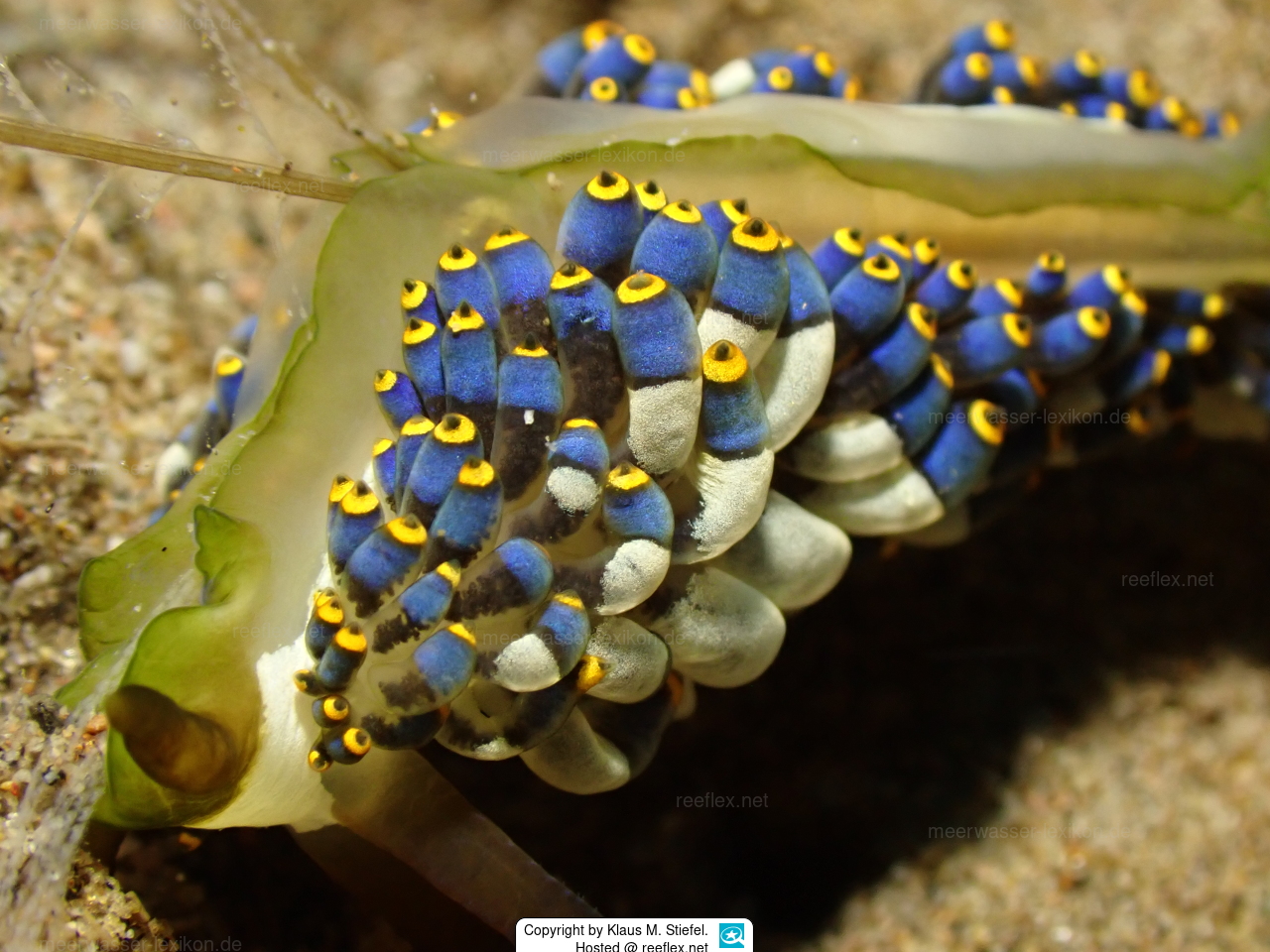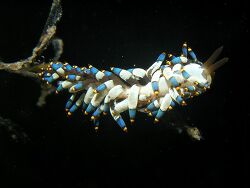Info
Tenellia puti A. Y. Kim & Gosliner, 2024
The tropical Indo-Pacific nudibranchs of the family Fionidae are little known and have not been thoroughly studied in the past. Many undescribed species occur throughout the Indian and Pacific Oceans and are concentrated in the Coral Triangle. With the publication of a revised systematic arrangement of the Fionidae in 2024, the documentation and description of new taxa of the Fionidae has been completed. A. Y. Kim & Gosliner described the new species Tenellia bughaw, Tenellia puti, Tenellia nakapila, as well as Abronica payaso and Abronica turon in 2024.
The type locality for the description of Tenellia puti is the Philippines.
The species name “puti” is the Filipino word for “white” and reflects the characteristic opaque white spots on the notum of this species.
Tenellia puti resembles Tenellia bughaw in overall appearance and can often be found at the same time and in the same place as it, but there are differences in color pattern and significant differences in genetic divergence.
While Tenellia puti has opaque white spots on the notum, the body of Tenellia bughaw is uniformly blue.
Tenellia puti feeds on hydrozoan polyps.
The tropical Indo-Pacific nudibranchs of the family Fionidae are little known and have not been thoroughly studied in the past. Many undescribed species occur throughout the Indian and Pacific Oceans and are concentrated in the Coral Triangle. With the publication of a revised systematic arrangement of the Fionidae in 2024, the documentation and description of new taxa of the Fionidae has been completed. A. Y. Kim & Gosliner described the new species Tenellia bughaw, Tenellia puti, Tenellia nakapila, as well as Abronica payaso and Abronica turon in 2024.
The type locality for the description of Tenellia puti is the Philippines.
The species name “puti” is the Filipino word for “white” and reflects the characteristic opaque white spots on the notum of this species.
Tenellia puti resembles Tenellia bughaw in overall appearance and can often be found at the same time and in the same place as it, but there are differences in color pattern and significant differences in genetic divergence.
While Tenellia puti has opaque white spots on the notum, the body of Tenellia bughaw is uniformly blue.
Tenellia puti feeds on hydrozoan polyps.







 Dr. Klaus M. Stiefel, Philippinen
Dr. Klaus M. Stiefel, Philippinen
























































